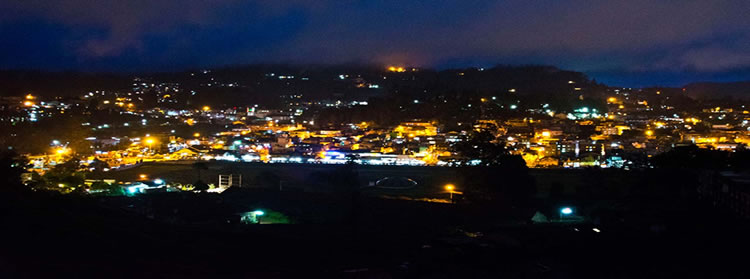OOTY : QUEEN OF HILL STATIONS
You never know what you'll find when the travel bug hits you! My roommates and I set out on a weekend trip without any advance arrangements on a dreary weekend in December. We travelled to Ooty on rented bikes from Coimbatore, and we were eager adrenaline junkies. Ootacumund, or Ooty's Blue Mountains, is a charming hill station nestled in the Nilgiris. It stands over 2200 metres and has all the trappings of a charming hill station. With cool temperatures all year, Ooty has won the title of "QUEEN OF THE HILLS" for its enticing setting in the middle of green hills. Ooty's colonial history is reflected in its charming bungalows and heritage buildings, making it a popular tourist destination in South India.
THE RIDE......
The road leads to the Nilgiris' Queen of Hills via misty, meandering paths through hills, green coffee, and tea plantations. On your path through the Nilgiris, you come across shrubs with Neelakurinji flowers. The flowering of these purple-blue flowers occurs once every twelve years, and many people in the villages keep track of their ages through the flowering of these purple-blue flowers. These are the flowers that transform the hills into a mesmerising blue, hence the name The Nilgiris. These flowers are no longer commonly seen in Ooty due to the widespread destruction of tea plantations. The final stretch of road from Ooty offers the most stunning views. At times, the road passes through dense pine forests, allowing glimpses of sunlight through the foliage, and at other times, it passes through thick bamboo woodland. The appearance of small lakes and waterfalls in the centre of the landscape just serves to remind you of God's bounty. When we arrive in Udagamandalam or Kovai, a glitzy town surrounded by the Nilgiris with a blue toy train chugging through it, we are enthralled by this magnificent path through nature.
We left Coimbatore at 8:30 a.m. for an 80-kilometer ride through Mettupalayam, where the weather is cool and rainy in December. The famous route to Ooty is Mettupalayam-Connor-Ooty, and we drove through that lane, which was blocked by cliff debris due to heavy rain. We continued on that track, which was blocked by cliff debris due to heavy rain, so we had to detour and start from Mettupalayam, a 30 km long and more adventurous route with 48 narrow hairpins that leads us to Kotagiri, from where Ooty is only 36 hairpins away with a 2 hour ride. We arrived in Mettupalayam at 9:30 a.m., were rerouted to Kotagiri at 10:00 a.m., arrived in Kotagiri at 2:00 p.m., and arrived in Ooty at 5:00 p.m. Since it is rainy and foggy, the ghat road is pitch dark and slippery, but it is so adventurous because you can feel the clouds going right through you without allowing any of the sunlight to pass through, Though the road is dangerous with narrow edges and immediate hairpins with speeding opposite riders and a cold drizzle with wet clothing, we found serenity and tranquillity among ourselves. while taking us in its hands embracing us with its beauty.
The more you venture, the more intrigued you will be by the pattern of houses around you, the more you will be amazed by their unorthodox planning of houses on valleys surrounded by carrot gardens and patches of tea trees between the houses, the more greenery around you will be fully discovered, easing our mind, Ooty has many interesting and diverse places.
It was originally a tribal territory, inhabited by the Todas and other tribes who coexisted through specialisation and trade. To this day, the Badagas (who arrived from the Mysore Plateau about or before 1700) are renowned for crop cultivation and the Todas for buffalo water raising. 'Old Ooty' was once inhabited by the Todas. The Todas then turned over that part of town to Mr. John Sullivan, the Governor of Coimbatore at the time. He later founded the town and promoted the planting of tea, chinchona, and teak trees. Like many of the settlers, Sullivan was pleased by the tribes' cooperation and tried to uphold this balance. Later, he fought relentlessly for these tribes' land rights and cultural recognition, and the British government punished him financially and socially as a result. The hills were rapidly established during the British Raj since they were almost entirely owned by private British citizens. Unlike the rest of India, the British settled in Ooty town and remained for decades. Ooty was the summer capital of the presidency of Madras and other small kingdoms, and was often visited by the British during colonial times, and is still a popular summer and weekend resort today. Soldiers were also sent here to recuperate, as well as to Wellington, which was close by (to this day the home of the Madras regiment).







Comments
Post a Comment